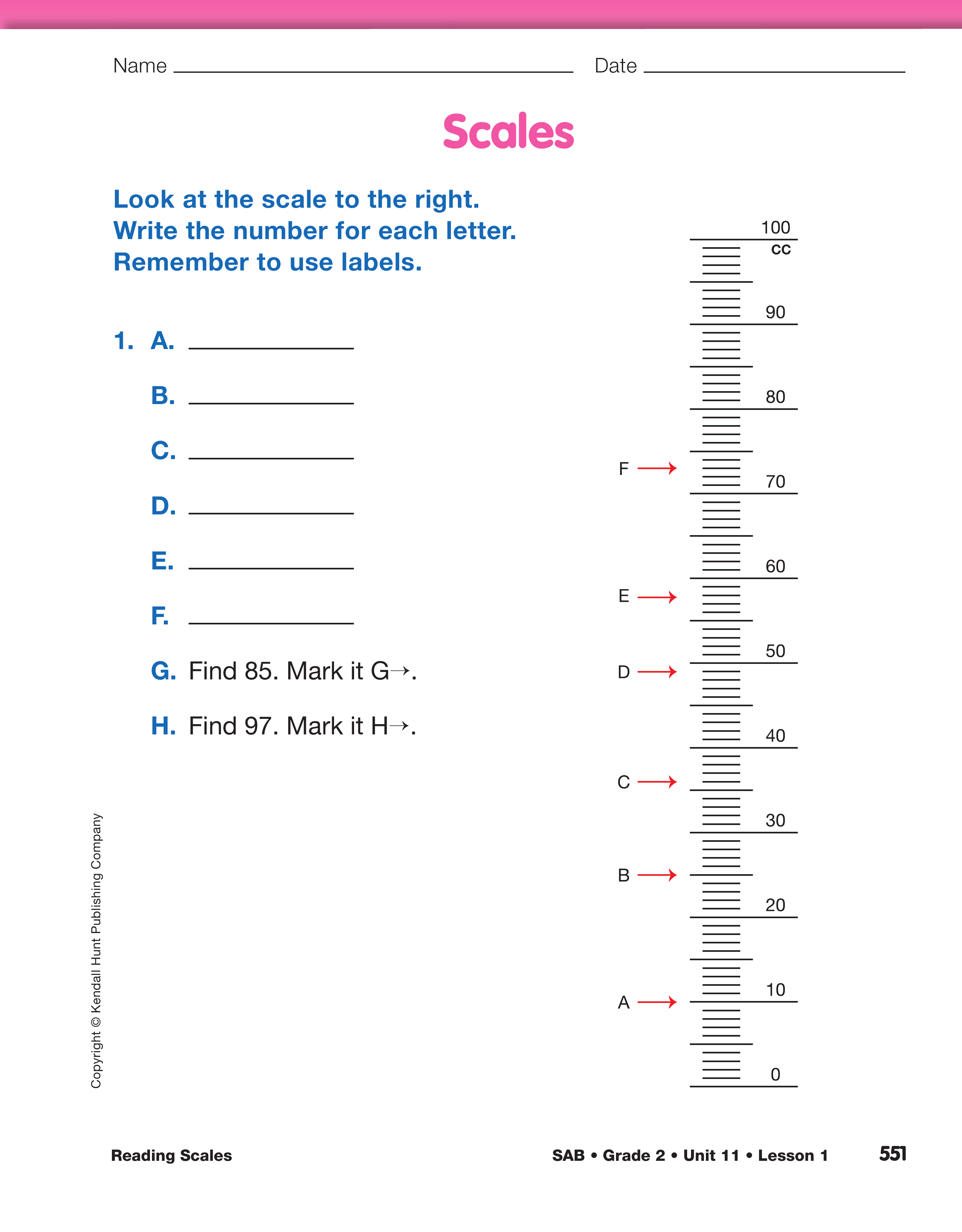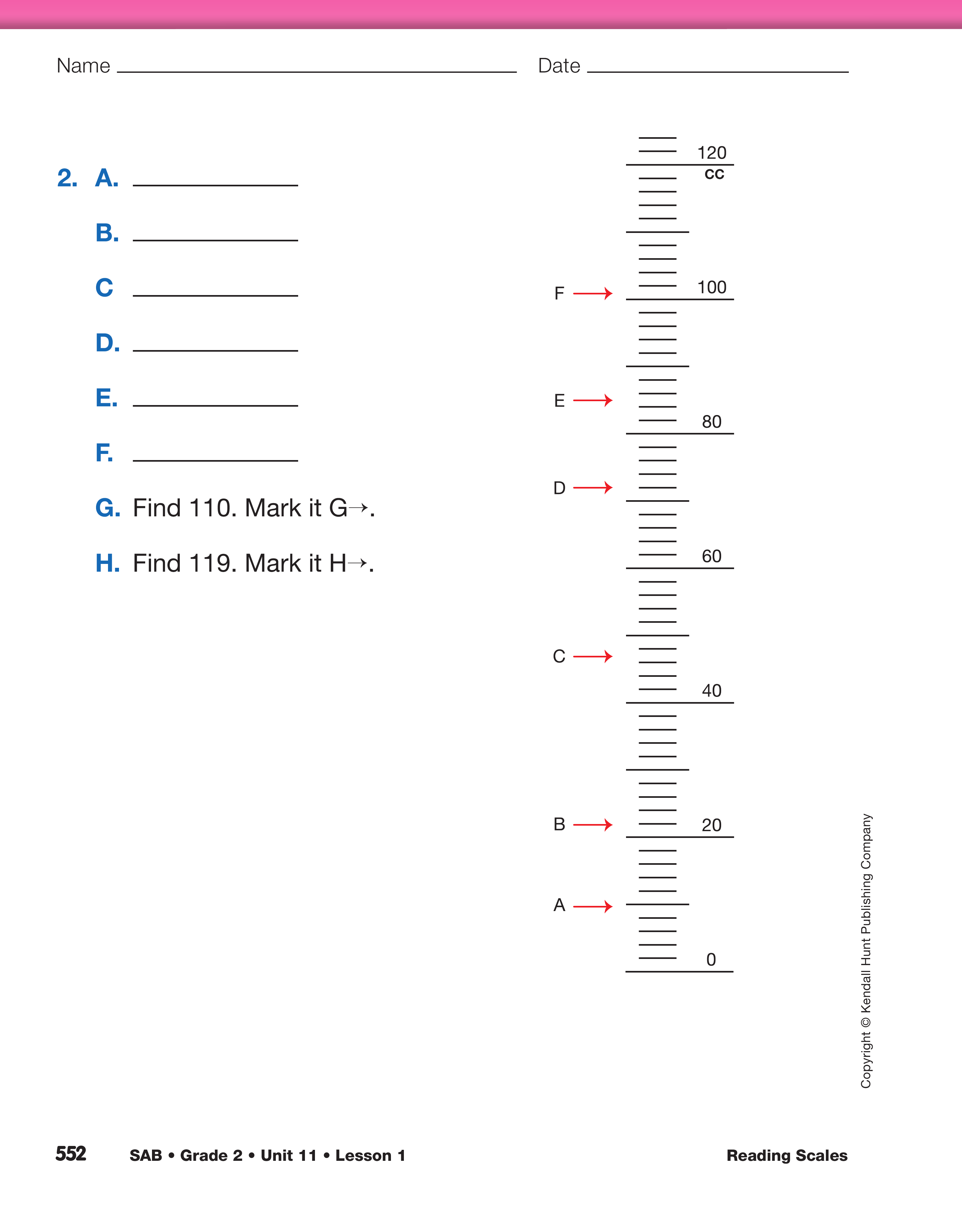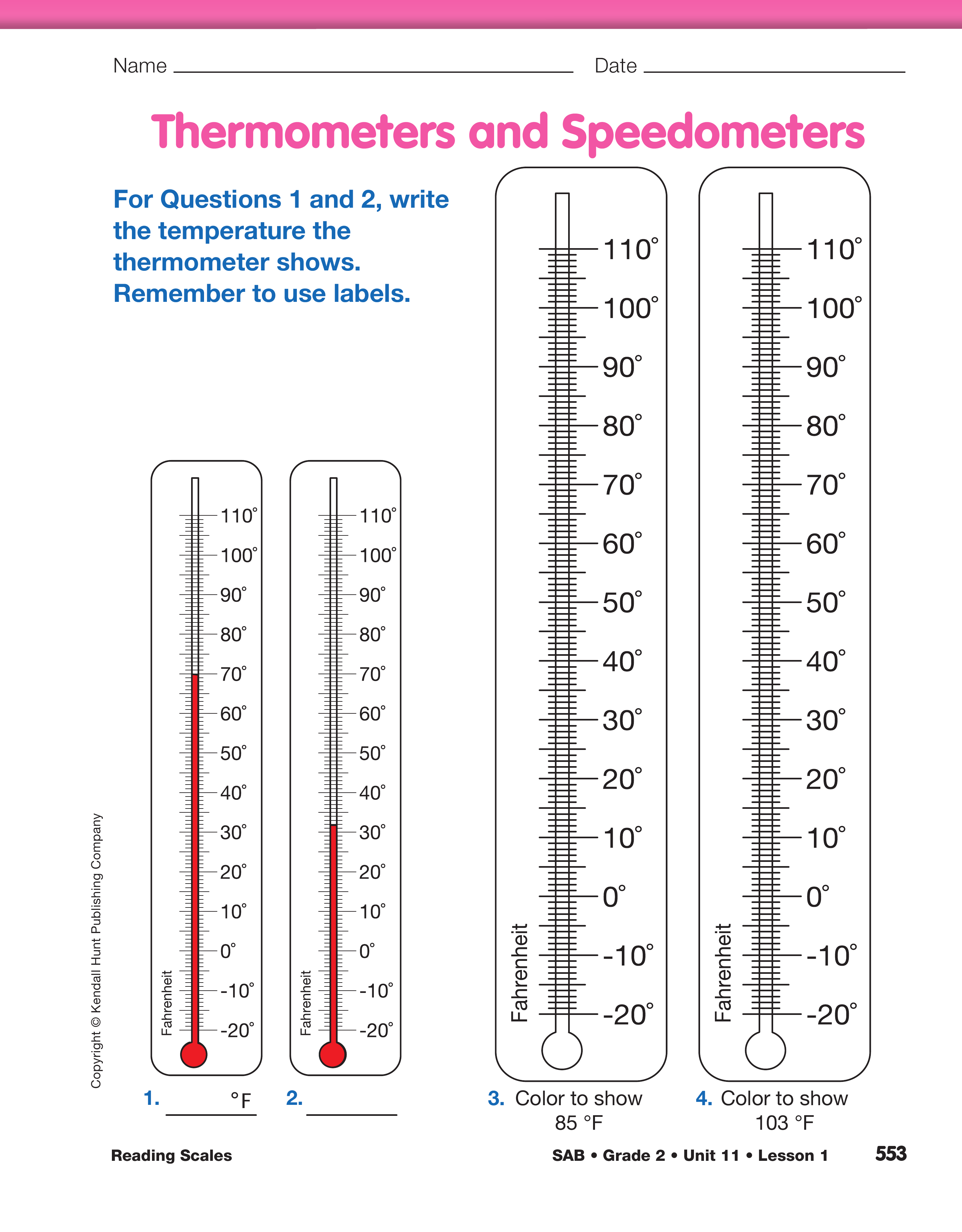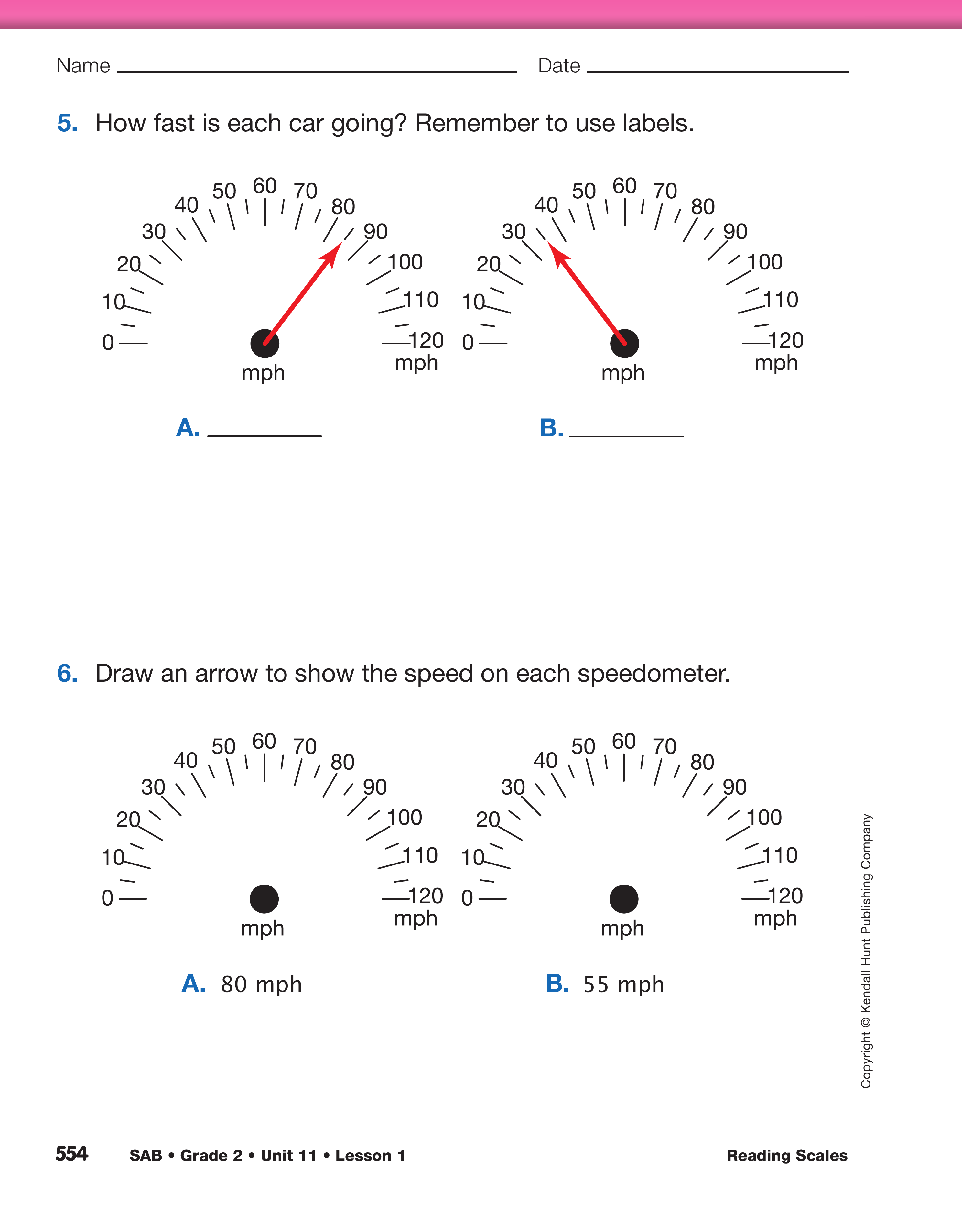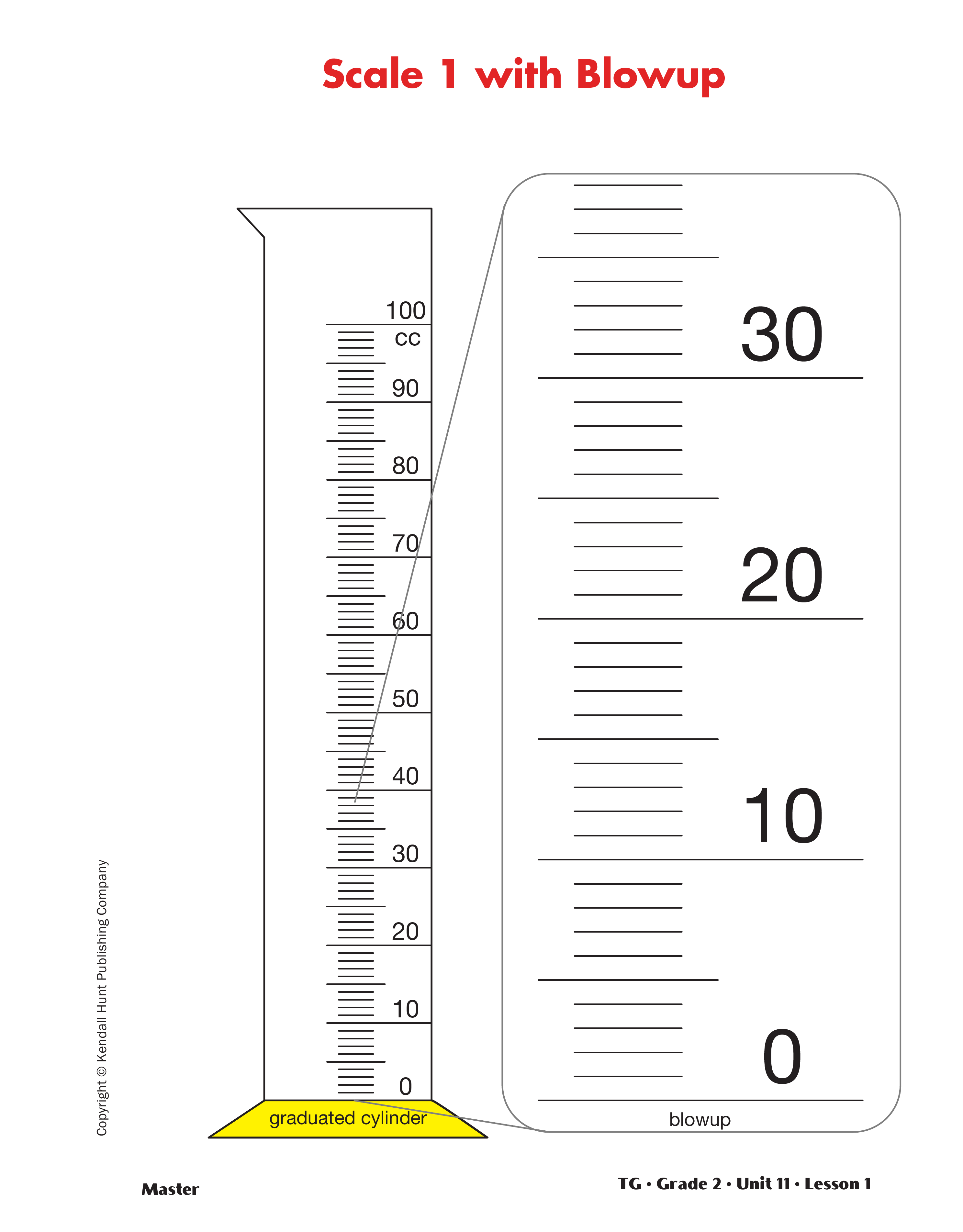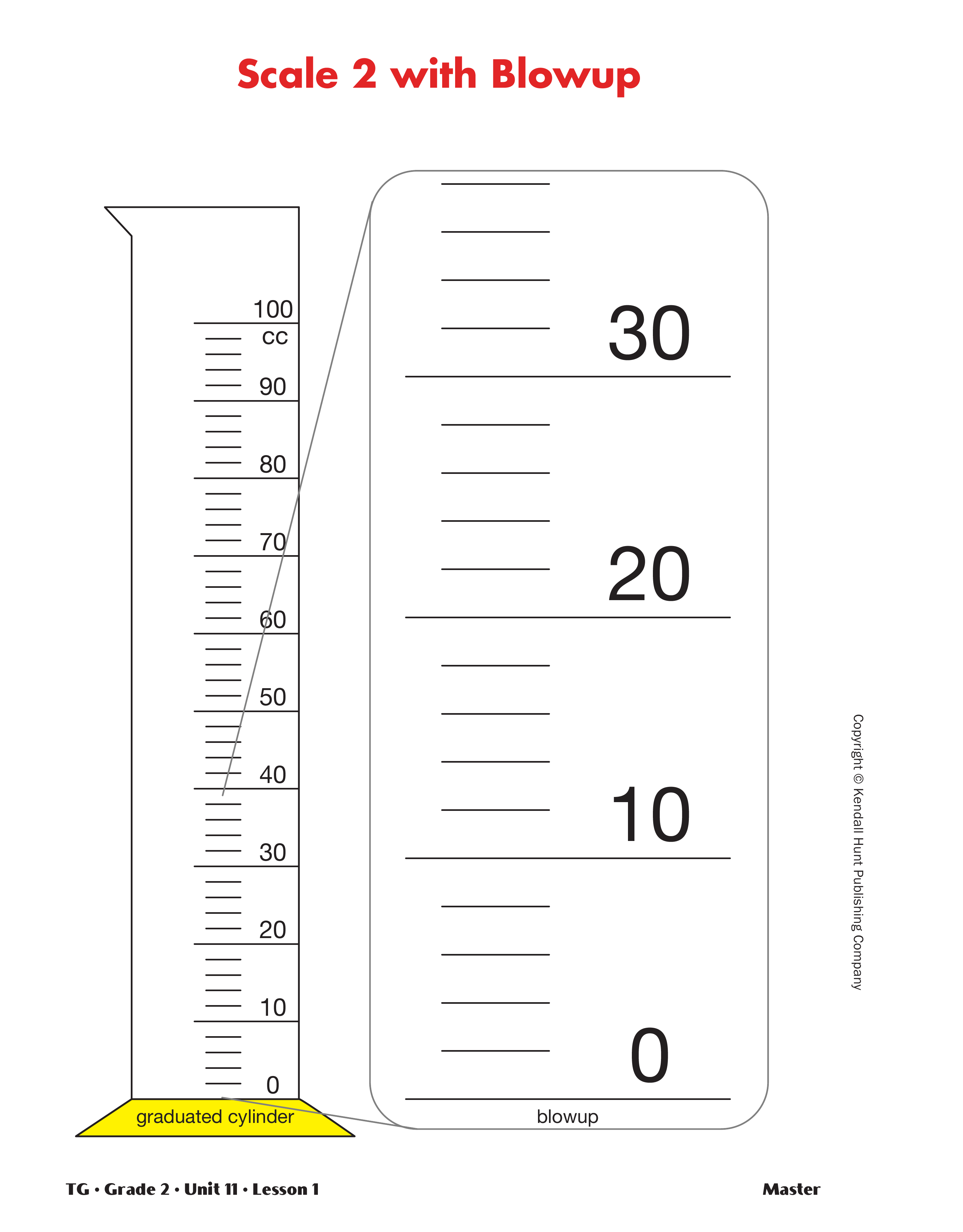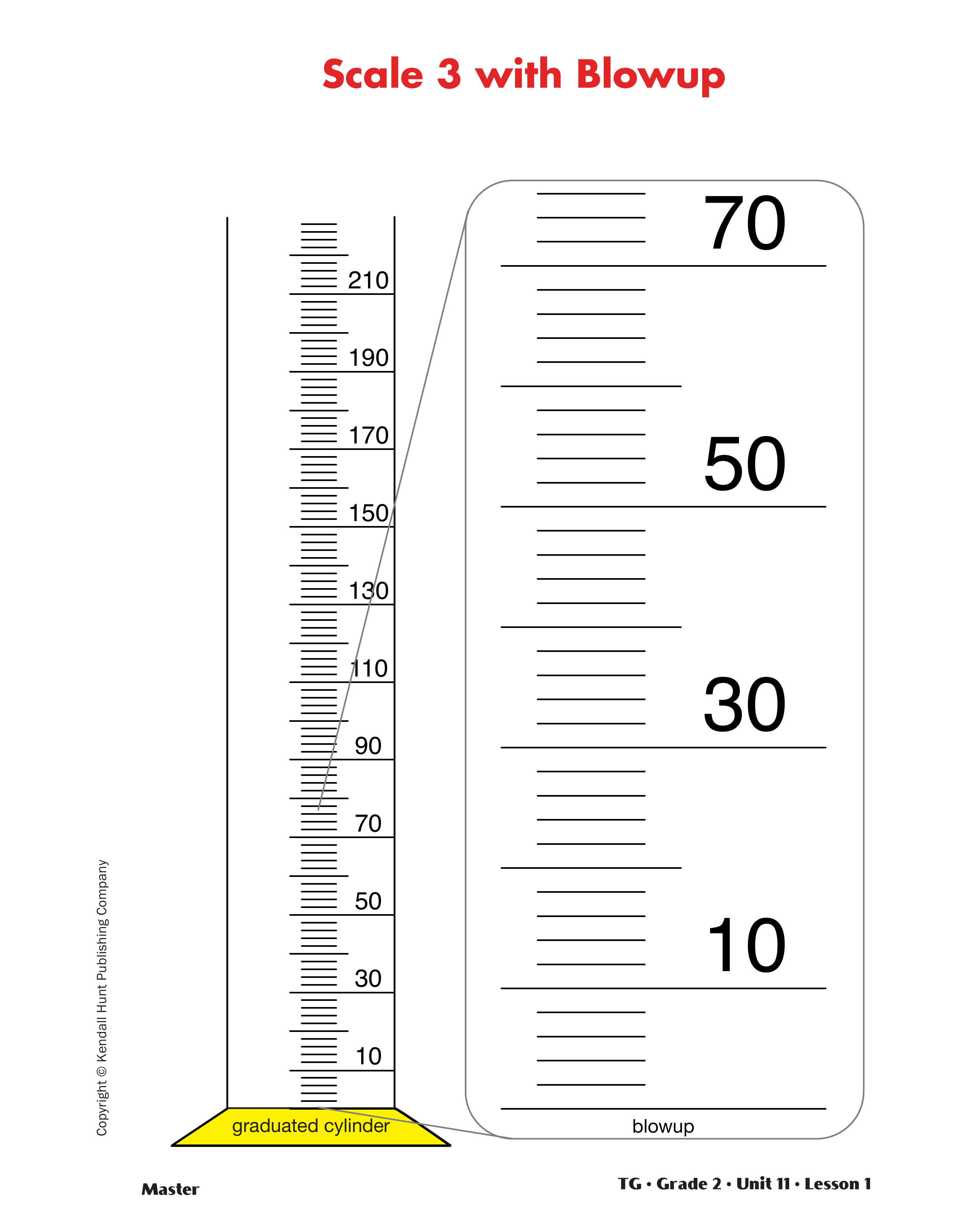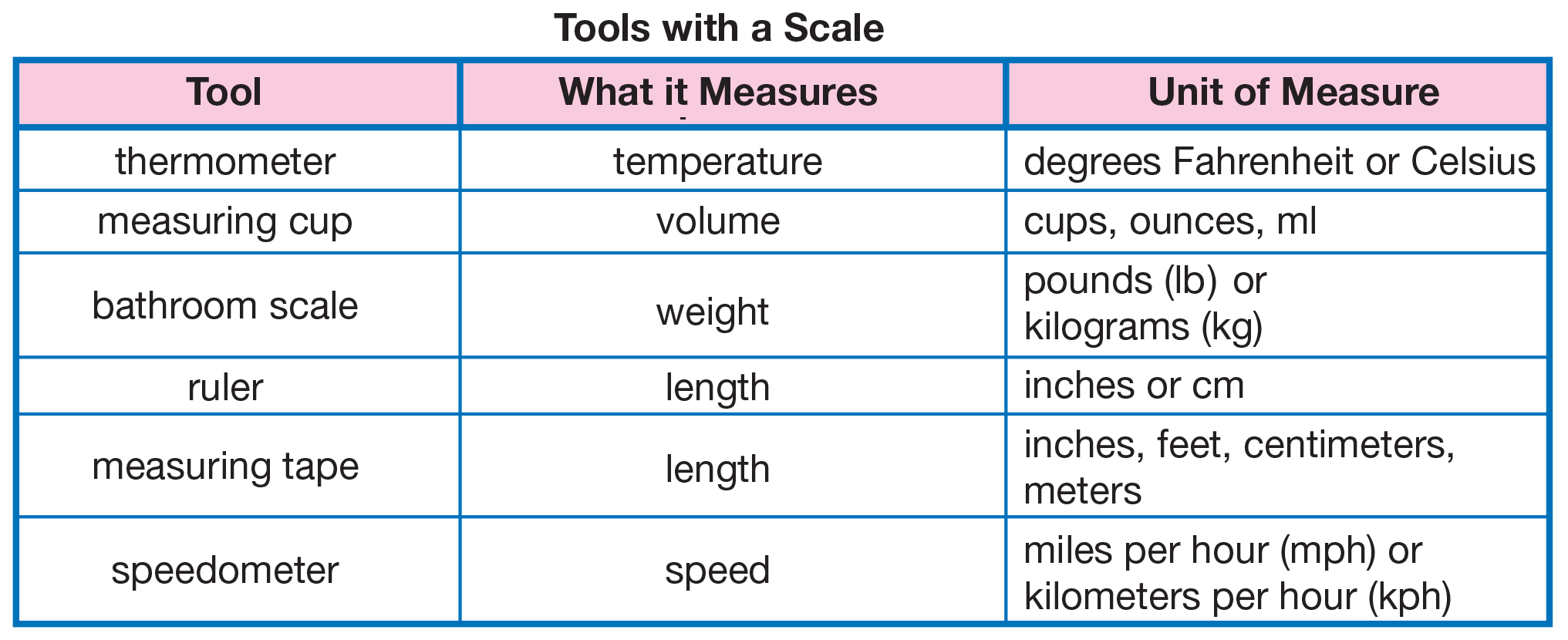Depending upon the collection you have gathered, you may
wish to keep the measuring tools at stations and have
student groups rotate to each to observe and discuss various
scales.
Observe Scales. Distribute examples of measuring
tools containing scales to groups of 2–4 students.
Ask students to take a couple of minutes to examine
the scale on their tool, discuss what they observe
with their group, and then pass along their tool to
another group. Repeat until each group has looked at
3 to 4 different kinds of scales.
When observation is complete, launch a discussion
of the word scale: a series of spaces marked by lines,
dots, or numbers that is used for measuring quantities.
Display several examples of tools examined,
and ask:
- All of these objects are tools used for measuring.
How are all of these tools alike? (Possible
response: They all have lines or dots and numbers
on them.)
- What do you notice about the numbers on these
tools? (Possible responses: There is skip counting
on them to count by fives, tens, twenties, etc.
They all have zeros on them.)
- The lines and numbers or dots are called a scale.
The scale is used to read a measurement. What
could you measure using the tools we looked at
today? (Answers will vary.)
- What are some other examples of scales you have
seen? Where did you see them? (Possible
responses: on the dashboard of the car, on a grocery
store scale, on my bathroom scale, on a
barometer at home, on a bar graph we made in
class)
Using your examples of scales, explain that scales
have different units of measurement and measure
different aspects of the world. Use displays of the
Thermometer, Speedometer, and Graduated Cylinder
Masters to discuss the units of measurement on each.
Discuss how each unit would be labeled when written.
While displaying the Graduated Cylinder Master,
direct students' attention to the unit of measurement,
milliliters (ml). A milliliter is equivalent to a cubic
centimeter (cc). Graduated cylinders are generally
marked with milliliters, but the cubic centimeter is
the metric unit of volume we will use. See Content
Note.
We prefer the term cubic centimeter (cc) because it reminds
students of the meaning of the unit—a cube that is 1 cm on
each side or a cubic centimeter. The terms milliliter and
cubic centimeter may be used interchangeably.
Sometimes a scale is called by another name such as a dial
or a meter.
Create Tools with Scales Chart. Have students help
you fill in the tools with scales chart you prepared
prior to the lesson. See Materials Preparation. Your
chart may vary depending on the scales you have for
examples and the suggestions your students make.
See Figure 2.
Read Scales on Graduated Cylinders. Using displays
of the Scale 1 with Blowup, Scale 2 with Blowup, and Scale 3 with Blowup Masters, ask students
how they would use the scale to show various
quantities on each of the graduated cylinders represented.
Have volunteers touch the lines on each scale
on the displays and skip count by twos, fives, and
tens to determine what numbers go with lines that
are not numbered. Display the Scale 1 with Blowup
Master.
Ask prompts similar to the following:
- Think of the tools you saw with your group. This is
part of a scale on one of them. What tool uses a
scale like this? (a graduated cylinder)
- What is the unit of measure and label for this graduated
cylinder? (cubic centimeters or cc)
- How do you know if you should count by twos,
fives, or tens on each kind of scale? (Possible
response: Look at the bottom of the scale to see
how many marks are between zero and the next
number. Then you can tell if it counts by ones,
twos, fives, or tens.)
- How are measurements represented on Scale 1? (Possible response: The numbers skip count by
10s. When I counted starting at 0 and go to 10
there is a line for each number. That means each
line is 1 cc and the medium-sized line in the middle
shows 5 cc; five is halfway between 0 and
10.)
Point to or draw a heavy line on the mark showing
25 on the enlarged scale.
- If this cylinder is filled with water to this mark, how
much water is in the cylinder? Remember to use a
label in your response. (25 cc)
- How do you know? (It is halfway between 20 and
30. The middle line shows 5 more than the number
before it, which is 20, so that means the measurement
is 25 cc.)
- Show us how you can skip count on this scale to
find this measurement. Point to the marks as you
count. (Pointing to the appropriate marks: 0, 5,
10, 15, 20, 25)
- Who can show us how to find 32 cc? Point to each
mark as you count. (pointing to the appropriate
marks: 0, 5, 10, 15, 20, 25, 30, 31, 32)
Continue pointing to specific lines on the different
scales and ask students to tell the numbers that go
with those lines. Give students numbers and have
them skip count and point to the corresponding lines
on the scale. Include amounts that may lie between
lines, for example, finding 13 cc on the Scale 2 with Blowup Master. Use similar prompts with the
remaining two Masters. Help students realize the
differences on each:
- The Scale 2 with Blowup Master depicts one line
for every two cubic centimeters, and multiples of
10 cc are labeled; half, or 5 cubic centimeters
would be half way between the lines showing 4
and 6 cubic centimeters.
- The Scale 3 with Blowup Master depicts one line
for every two cubic centimeters and multiples of
20 cc labeled. On this scale, discuss that the
halfway mark represents a ten. Also note that
another difference is that Scale 3 goes beyond
210 cc.
Assign the Scales pages from the Student Activity
Book to student pairs. Encourage them to examine
each scale to note how each is alike or different
before starting. Remind them to label their answers.
As students work, circulate to observe how they are
reading each scale and guide students as needed.
After student pairs complete the pages, use display
pages to discuss students' responses to questions.
Have students demonstrate how they counted and
used each scale to determine answers.
Ask prompts
similar to the following:
- How are these two scales alike? (Possible
responses: They both begin at zero. They are both
vertical/up-and-down scales. They both skip
numbers.)
- How are they different? (Possible responses: The
scale in Question 1 depicts one line for every
cubic centimeter and multiples of 10 cc are
labeled; the scale in Question 2 depicts a scale
with one line for every 2 cubic centimeters and
only even multiples of ten are labeled.)
- Who can show us how you found the answer to
[Question 1E]?
Read Other Scales. Use displays of the Thermometer
and Speedometer Masters to practice reading additional
scales.
- How is this scale like those on the graduated cylinders?
How is it different?
- What do you think this scale measures? Where do
you see it?
- What is the unit of measurement on this scale?
- Does this scale count by ones, twos, fives, or
some other amount?
Point to specific lines on each scale and ask students
to tell the measurements that go with those lines.
While viewing the Thermometer Master, point out
and discuss the unit of measurement and the label
used to represent degrees Fahrenheit. While discussing
the Speedometer Master, define the term and
explain that the unit of measurement, mph, is an
abbreviation for miles per hour.
Have students complete the Thermometers and
Speedometers pages in the Student Activity Book.
Remind students to label their measurements. When
adequate time has been provided, have students discuss
and explain how they determined measurements.
- How did you find 103° on the thermometer? (Possible response: I found 100 and went up
3 lines because each line is one degree.)
- What do you notice about the numbers on the
thermometers? (They skip count by tens, but
there is a 10 and 20 below the zero with a minus
sign before each.)
- Why do you think there are minus numbers? What
do you think that means? (Possible response: I
heard the weatherman on the news in the wintertime
say the temperature was below zero. That
was really cold! Maybe it's for when it's really
cold outside, like on a number line there's zero,
but this is less than that.)
- How did you find 55 mph on the speedometer? (Possible response: I looked between 50 and 60
and know it's the line half way between like on a
number line.)
- In Question 5A Tara thinks the speedometer read
81 mph. Do you agree? Why or why not? (Possible
response: The speedometer is counting by fives
and the arrow is halfway between 80 and 90 on
the 85 mark. 81 mph would be just a little bit past
the 80 but there is no line to show exactly
81 mph.)















